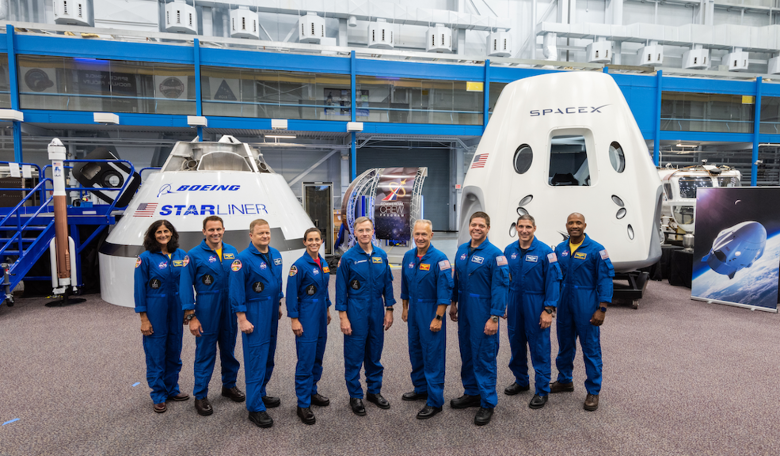Seven years after the space shuttle completed its final flight, the first US astronauts to blast off from home ground in American-made spacecraft were announced by NASA on Friday.
The selected astronauts are set to fly to low Earth orbit in Boeing’s CST-100 Starliner and SpaceX’s Crew Dragon vehicles as part of the agency’s Commercial Crew Program.
Following the retirement of the shuttle, US astronauts have been hitching a ride to the International Space Station (ISS) in a Russian Soyuz spacecraft which lifts off from the Baikonur Cosmodrome in Kazakhstan. However after 2019 NASA are on their own, as the agency hasn't committed to buying any further seats for its astronauts with their Russian counterparts.
The agency has instead been working with several American aerospace industry companies to develop their own human spaceflight systems. Then in 2014 NASA announced that Boeing and SpaceX would share $6.8 billion to develop transport systems to shuttle a crew back and fourth to the ISS. The final figures revealed it was an unequal share as Boeing asked for more money to do the same job.
Boeing has settled for a squat looking Starliner craft that resembles an Apollo-style capsule NASA used for its moon missions, meanwhile SpaceX has modified its roomier-looking Dragon cargo ship to ferry astronauts to the ISS. The two will also fly from different locations with SpaceX flying from pad 39A at the Kennedy Space Center – the same one used by the shuttles and the Saturn 5 moon rockets. Boeing on the other hand will launch from pad 41 at the nearby Cape Canaveral Air Force Station. Both have yet to undergo uncrewed test flights before proceeding with astronauts onboard.
“To meet NASA’s requirements, the commercial providers must demonstrate that their systems are ready to begin regular flights to the space station….After the uncrewed flight tests, both companies will execute a flight test with crew prior to being certified by NASA for crew rotation missions,” said a NASA blog.
Boeing’s uncrewed flight test, known as Orbital Flight Test, is due to take place late 2018/early 2019 while its crewed flight is scheduled for mid 2019. Eric Boe, Christopher Ferguson and Nicole Aunabu Mann will be the Starliner test flight astronauts once the Orbital Flight Test has been completed successfully.
SpaceX has said that its uncrewed flight test, named Demo-1, will be ready by November this year. Its crewed flight will launch Robert Behnken and Douglas Hurley into space aboard a SpaceX Falcon 9 rocket in April 2019.
Providing all goes well up to this stage, then Josh Cassanda and Sunita Williams will be the first astronauts to fly to the ISS in Boeing's Starliner and Victor Glover and Michael Hopkins will be SpaceX's pioneering ISS crew. Additional team members will be assigned by NASA’s international partners at a later date.
The agency has contracted six missions, with as many as four astronauts per mission, for each company.











